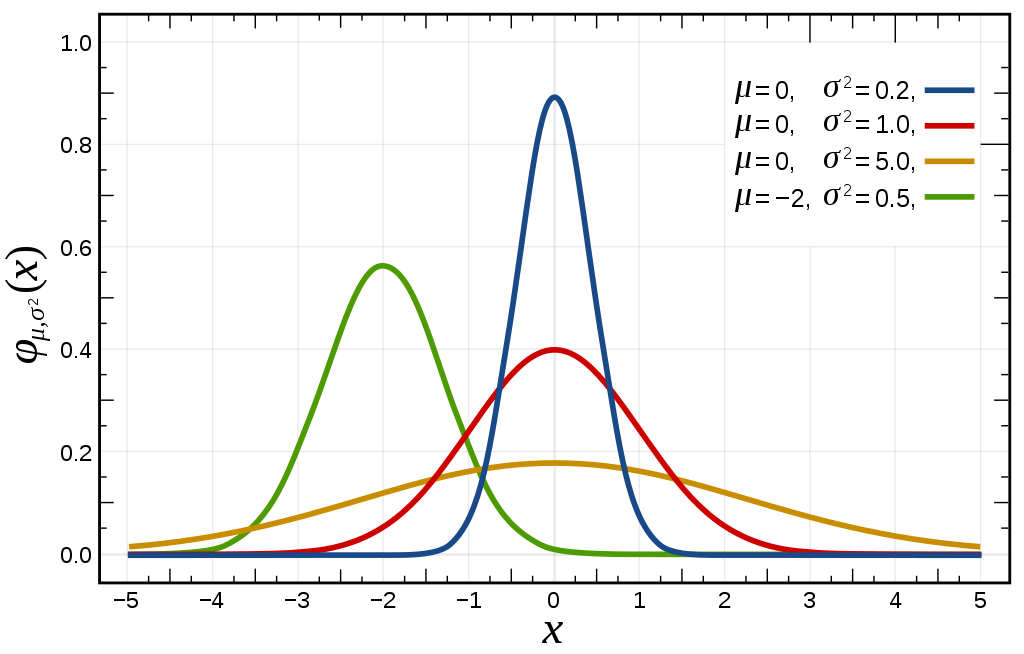Topics: Probability - Distribution Function
(definition)
Let be an absolutely continuous random variable.
We say that has a normal distribution (or Gaussian distribution) if its density function is:
…and write .
Applications
Random variables with normal distributions help us model many natural, social and psychological phenomena, including, but not limited to:
- Height
- Effects of a drug
- Intelligence quotient
- Noise level in telecommunications
In particular, the random variable such that is of special importance: its distribution is called the standard normal distribution.
Expected Value and Variance
Notice that this probability distribution depends on two parameters: and .
(theorem)
The expected value of an with a normal distribution is simply and elegantly:
(theorem)
The variance of an with a normal distribution is simply and elegantly:
Indeed, we use these two values as parameters since:
-
provides the value around which most of the mass concentrates. It is a localisation parameter: if we change it, the curve moves horizontally, but it stays otherwise the same.
-
provides the distribution’s standard deviation (i.e. a measure of how disperse the mass is around ). It is a dispersion parameter: if we change it, the concentration of the mass changes, but the curve stays in the same location.
Examples
A few examples of the density distribution graphs of various normal distributions with different parameters:

Notice how, effectively, the mass concentrates around and provides a dispersion measure, as mentioned before.
The red curve is the standard normal distribution.